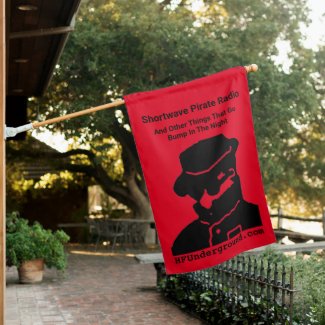Tuned in at 1805 UTC. Solid FM signal noted on 29.71 MHz FM. Sounds like Spanish language, but this is a legal Part 90 Business / Industrial Radio Pool - Business Radio Service - frequency. 20K0F3E emission. Given signal strengths, probably mobile to mobile comms. Could be any number of licensed users. Unable to pull CTCSS tone (PL tone). 29.710 MHz FM
The FCC actually calls everything above 25 MHz part of the land mobile service for Part 90 allocation. However, the 25 MHz frequencies are only licensed to a handful of users. The 27 MHz frequencies are used, but same thing applies...only a handful of users. There are more licensed users on 29 MHz and even more on the regular 30-50 MHz frequencies. The 27 MHz frequencies may all be licensed for itinerant use, 27.49 MHz is itinerant only, same with 35.04 MHz and 43.04 MHz.
The 27 MHz frequencies suffer from severe QRM during band openings. Regular FM voice is most commonly used, but some licensed users have emissions for more traditional HF modes such as AM voice, SSB voice, RTTY and other narrow-band digital modes.
25.020 MHz
25.040 MHz
25.060 MHz
25.080 MHz
25.100 MHz
25.120 MHz
25.140 MHz
25.160 MHz
25.180 MHz
25.200 MHz
25.220 MHz
25.240 MHz
25.260 MHz
25.280 MHz
25.300 MHz
25.320 MHz
27.430 MHz
27.450 MHz
27.470 MHz
27.490 MHz - itinerant only
27.510 MHz - low power only
27.530 MHz - low power only
29.710 MHz
29.730 MHz
29.750 MHz
29.770 MHz
29.790 MHz
30.580 MHz
30.600 MHz
30.620 MHz
30.640 MHz
30.660 MHz
20 kHz spacing up to 31.980 MHz
Then
33.020 MHz to 33.980 MHz - 20 kHz steps
35.020 MHz to 35.980 MHz - 20 kHz steps
37.020 MHz to 37.980 MHz - 20 kHz steps
39.020 MHz to 39.980 MHz - 20 kHz steps
42.020 MHz to 46.580 MHz - 20 kHz steps
47.020 MHz to 49.580 MHz - 20 kHz steps
Plus special frequencies:
36.250 MHz FM - may be used for oil spill clean up operations only (simplex or repeater)
41.710 MHz FM - may be used for oil spill clean up operations only (simplex or repeater)
Usually 36.25 MHz is used as the repeater output. Both 36.25 MHz and 41.71 MHz are shared with federal government users and U.S. military users, which are the primary users on the
30.000 MHz to 30.550 MHz
32.000 MHz to 33.000 MHz
34.000 MHz to 35.000 MHz
36.000 MHz to 37.000 MHz
38.000 MHz to 39.000 MHz
40.000 MHz to 42.000 MHz
46.600 MHz to 47.000 MHz
49.600 MHz to 50.000 MHz
bands. 25 kHz spacing is the standard for military operations. Federal government systems use a mixture of 20 kHz spacing and 25 kHz spacing. A good example of this is the SNOTEL telemetry system that operates on 40.67 MHz 40.670 MHz.
Military users are allocated secondary rights on all frequencies outside the bands listed above for the entire 30-88 MHz spectrum, including the 50-54 MHz 6 meter amateur radio allocation, the 72-76 MHz fixed, mobile, RCRS, Part 90, assistive listening service and 74.8 MHz - 75.2 MHz subband for the 75.000 MHz marker beacons on 75 MHz aeronautical service...and of course the 54-72 MHz and 76-88 MHz broadcasting bands.



